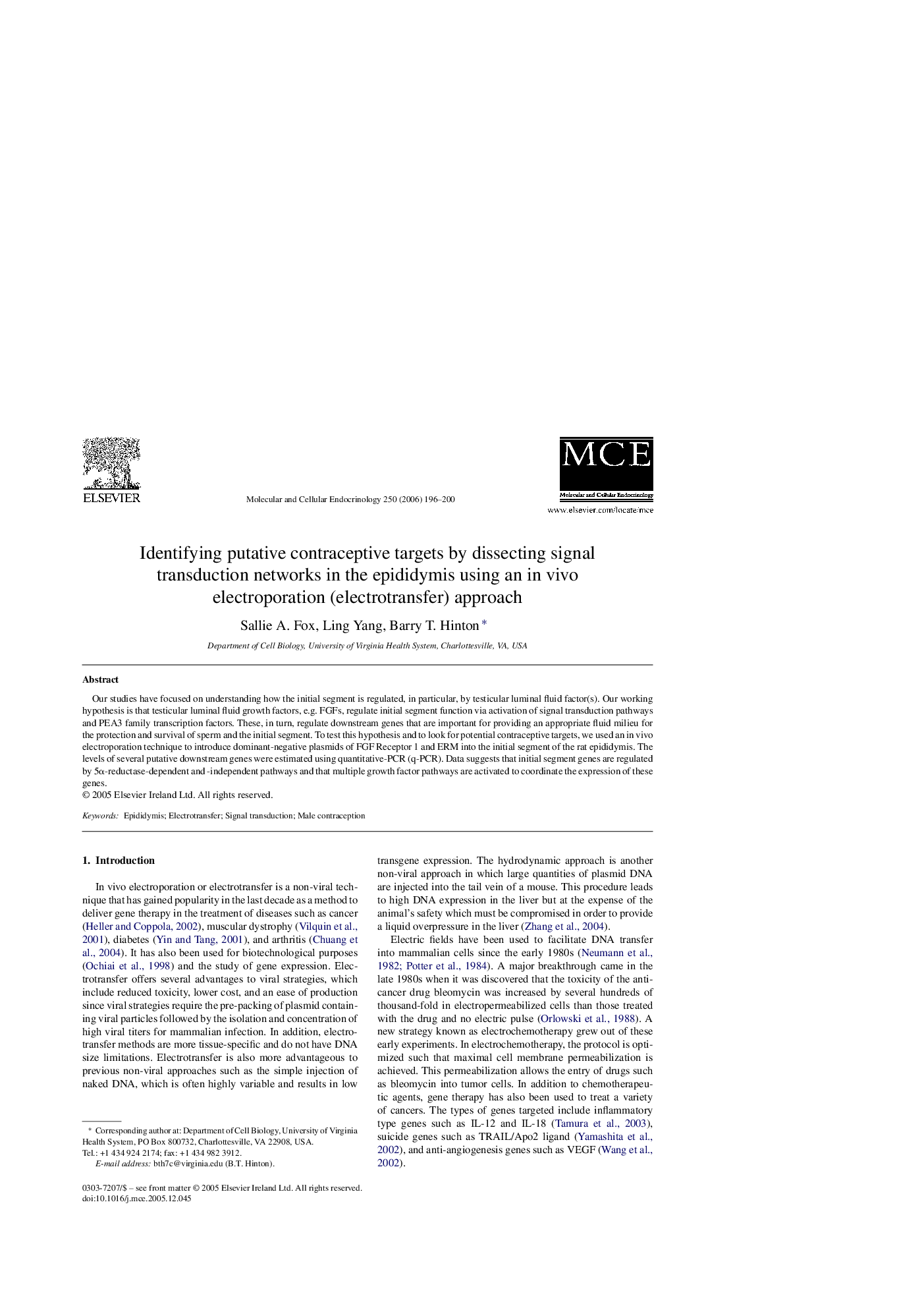| کد مقاله | کد نشریه | سال انتشار | مقاله انگلیسی | نسخه تمام متن |
|---|---|---|---|---|
| 2198136 | 1551007 | 2006 | 5 صفحه PDF | دانلود رایگان |

Our studies have focused on understanding how the initial segment is regulated, in particular, by testicular luminal fluid factor(s). Our working hypothesis is that testicular luminal fluid growth factors, e.g. FGFs, regulate initial segment function via activation of signal transduction pathways and PEA3 family transcription factors. These, in turn, regulate downstream genes that are important for providing an appropriate fluid milieu for the protection and survival of sperm and the initial segment. To test this hypothesis and to look for potential contraceptive targets, we used an in vivo electroporation technique to introduce dominant-negative plasmids of FGF Receptor 1 and ERM into the initial segment of the rat epididymis. The levels of several putative downstream genes were estimated using quantitative-PCR (q-PCR). Data suggests that initial segment genes are regulated by 5α-reductase-dependent and -independent pathways and that multiple growth factor pathways are activated to coordinate the expression of these genes.
Journal: Molecular and Cellular Endocrinology - Volume 250, Issues 1–2, 16 May 2006, Pages 196–200